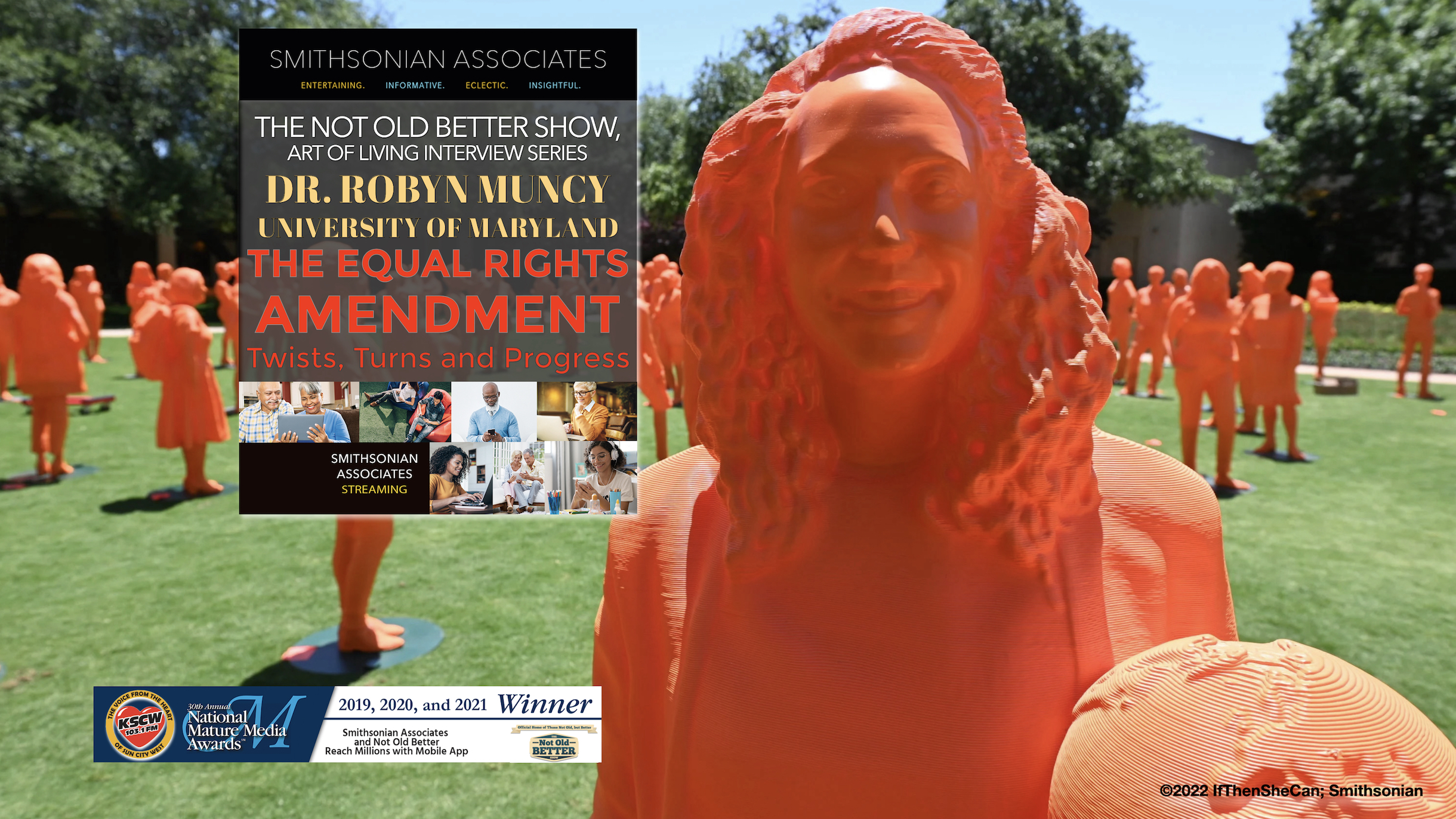The Not Old Better Show, Smithsonian Associates Interview Series
Welcome to The Not Old Better Show, Smithsonian Associates Interview Series on radio and podcast. I’m Paul Vogelzang and today’s show is an important one. Not only is it important to us as citizens, but it’s also important as humans and important in the manner of our respect, treatment, and relations with one another. I rarely say this, but it’s important to me and I strongly support this constitutional process.

By way of background, in 1923, the Equal Rights Amendment debuted in Congress. Introduced only three years after the Woman Suffrage Amendment was ratified, the ERA aimed to eradicate laws that discriminated against women. In the crosshairs of this proposed amendment to the Constitution were, for instance, state laws that closed jury service to women, prevented married women from establishing residence separate from their husbands, granted fathers sole custody of children, or barred women from jobs requiring night work.
Proponents of the Equal Rights Amendment claimed in 1923 and continue to insist that it will help American women achieve full equality with men. But the turbulent history of the ERA reveals deep skepticism about the claim: Between 1923 and the late 1960s, most progressive feminists opposed the ERA. Not until the early 1970s did most feminists rally around it. Having at that point gained widespread support from progressives, it passed through Congress with substantial bipartisan support. Most observers agreed that the ERA would sail to ratification; instead, a conservative opposition swelled and stopped the amendment in its tracks.
 Our guest today is Dr. Robyn Muncy. Dr. Robyn Muncy is Professor of History at the University of Maryland. Professor Muncy’s scholarship and teaching focus on women, social policy, progressive social movements, and labor/working-class history in twentieth-century America. The ERA survives today as a cherished goal of many feminists, though some remain cool, and conservative opposition continues. Join historian Robyn Muncy and me as we discuss the wild twists and turns in the story of the Equal Rights Amendment from 1923 to 2022. And, you can find Dr. Robyn Muncy at Smithsonian Associates coming soon, with more details available on our website and Smithsonian Associates.
Our guest today is Dr. Robyn Muncy. Dr. Robyn Muncy is Professor of History at the University of Maryland. Professor Muncy’s scholarship and teaching focus on women, social policy, progressive social movements, and labor/working-class history in twentieth-century America. The ERA survives today as a cherished goal of many feminists, though some remain cool, and conservative opposition continues. Join historian Robyn Muncy and me as we discuss the wild twists and turns in the story of the Equal Rights Amendment from 1923 to 2022. And, you can find Dr. Robyn Muncy at Smithsonian Associates coming soon, with more details available on our website and Smithsonian Associates.
Please join me in welcoming to The Not Old Better Show, Smithsonian Associates Interview Series on radio and podcast, Smithsonian Associate, Dr. Robyn Munch.
My thanks to Dr. Robyn Muncy. And, you can find Dr. Robyn Muncy at Smithsonian Associates coming soon, with more details available on our website and Smithsonian Associates. My thanks to the Smithsonian team for all they do to support the show. My thanks to you, my wonderful audience here on The Not Old Better Show on radio and podcast. Please be safe, be well, and let’s support gender equality for all. Women’s rights and equality are basic human rights for upliftment and equal opportunities for everyone despite their gender. Let’s talk about Better. The Not Old Better Show on radio and podcast. Thanks, everybody and we’ll see each other next week right here at notold-better.com


